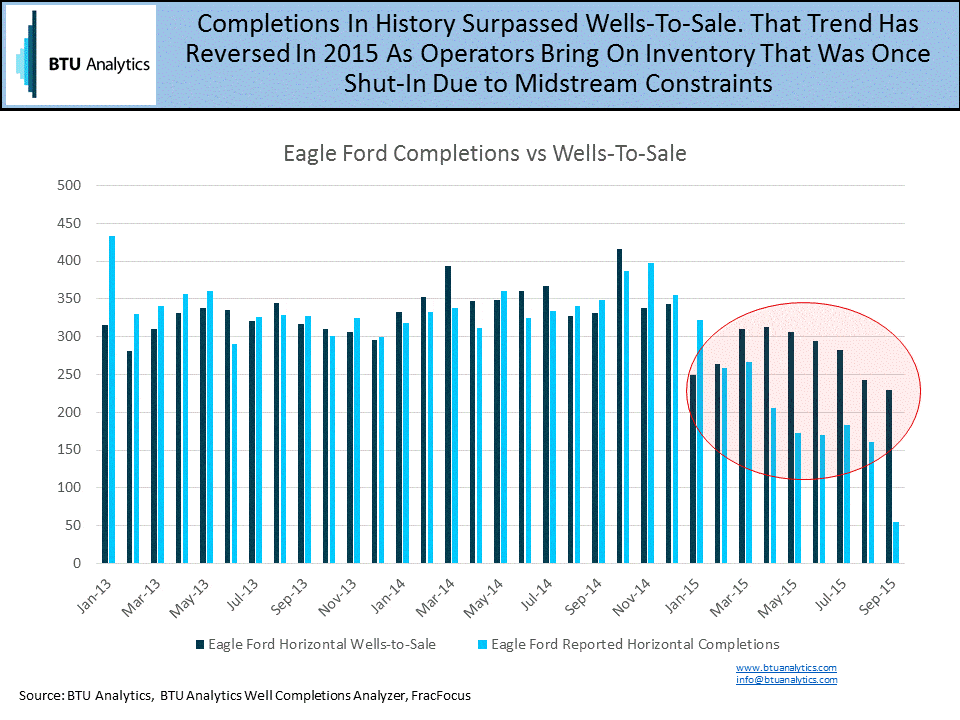Much has changed in the oil and gas sector over the past year. Crude prices declined sharply starting in Q4 2014 and set off a push for increased drilling efficiencies, resulting in increased production rates and culminating in little net production change despite a significant decline in rigs. Another trend has been the emergence of drilled but uncompleted wells (DUCs) as operators ‘hold on’ for the prospect of stronger pricing in the future.
BTU Analytics has started analyzing numerous data sets to reveal trends and provide insights into completions to improve production forecasting. Recently, BTU Analytics launched an online Well Completions Analyzer that allows a user to query the number of completions, sand use, and water use all derived from FracFocus data by shale play, state, county or operator and download the results in an easily exportable format. See screenshot below.

With the decline in commodity prices and the resulting drop in service costs, producers have increased the amount of proppant put down-hole in order to drive higher initial productions and increase per well recovery factors. Both the Eagle Ford and Permian have noted strong upward trends as producers try to extract as much oil and gas from wells as possible. Looking at a 3-month moving average shows that Permian proppant use grew by 23% from August 2014 to August 2015 while the Eagle Ford increased 37% over the same time period.

Another interesting trend that has emerged since prices softened has been the deviation in the pace of horizontal completions in both the Eagle Ford and Permian. As the chart below shows, horizontal completions peaked in the Eagle Ford in November 2014 at 398 and in the Permian in October at 223. However, Permian completions as a percentage drop declines less than the Eagle Ford.

Diving deeper into the Eagle Ford, we find that in 2013 and 2014 operators drilled 9,122 wells, completed 8,588 of those wells, and only turned to sales (began producing) 8,309 of those wells. This gap in activity has lead to a significant backlog of wells waiting either to be completed or connected to midstream infrastructure. In 2015, BTU Analytics estimates that the trend has reversed, with wells-to-sales outweighing completions. However, producers, through first half of the year, have continued to drill more wells then they have completed. This trend would suggest that producers are favoring bringing on already completed wells to help support cash flows while conserving capital by deferring completions.

With the BTU Analytics’ Well Completions Analyzer, it is extremely quick and easy to pull this type of data. This information, combined with BTU Analytics’ forecasted production data, can help industry players stay ahead of the curve and anticipate gains or declines in sand, pipe, or water disposal services. Most importantly, the data is available on an affordable and monthly basis, making it accessible to even the leanest companies. For the next month, BTU Analytics is offering free access to the Well Completions Analyzer. And, if you complete a free registration, you can export the data and statistics into excel for deeper analysis.









